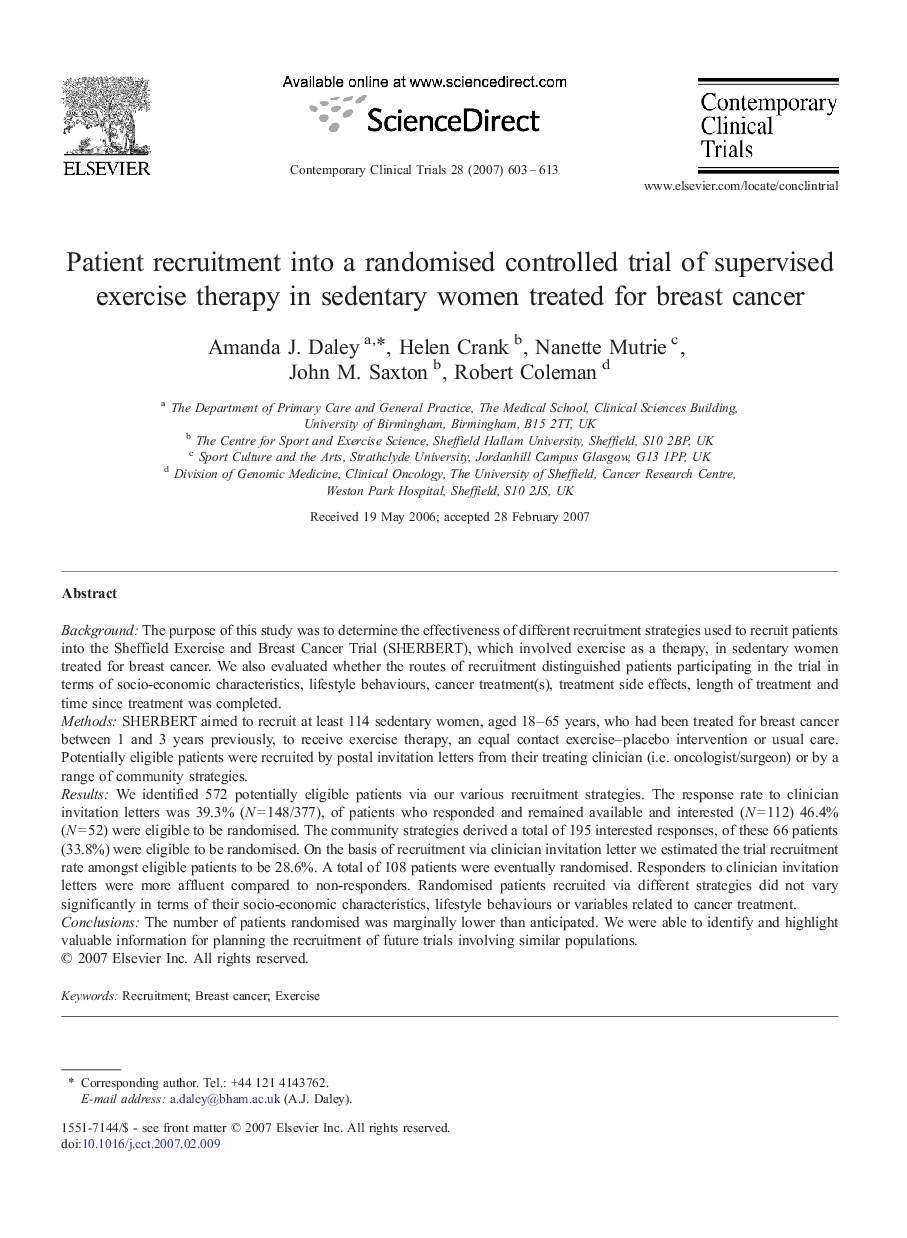| کد مقاله | کد نشریه | سال انتشار | مقاله انگلیسی | نسخه تمام متن |
|---|---|---|---|---|
| 3463421 | 1231555 | 2007 | 11 صفحه PDF | دانلود رایگان |

BackgroundThe purpose of this study was to determine the effectiveness of different recruitment strategies used to recruit patients into the Sheffield Exercise and Breast Cancer Trial (SHERBERT), which involved exercise as a therapy, in sedentary women treated for breast cancer. We also evaluated whether the routes of recruitment distinguished patients participating in the trial in terms of socio-economic characteristics, lifestyle behaviours, cancer treatment(s), treatment side effects, length of treatment and time since treatment was completed.MethodsSHERBERT aimed to recruit at least 114 sedentary women, aged 18–65 years, who had been treated for breast cancer between 1 and 3 years previously, to receive exercise therapy, an equal contact exercise–placebo intervention or usual care. Potentially eligible patients were recruited by postal invitation letters from their treating clinician (i.e. oncologist/surgeon) or by a range of community strategies.ResultsWe identified 572 potentially eligible patients via our various recruitment strategies. The response rate to clinician invitation letters was 39.3% (N = 148/377), of patients who responded and remained available and interested (N = 112) 46.4% (N = 52) were eligible to be randomised. The community strategies derived a total of 195 interested responses, of these 66 patients (33.8%) were eligible to be randomised. On the basis of recruitment via clinician invitation letter we estimated the trial recruitment rate amongst eligible patients to be 28.6%. A total of 108 patients were eventually randomised. Responders to clinician invitation letters were more affluent compared to non-responders. Randomised patients recruited via different strategies did not vary significantly in terms of their socio-economic characteristics, lifestyle behaviours or variables related to cancer treatment.ConclusionsThe number of patients randomised was marginally lower than anticipated. We were able to identify and highlight valuable information for planning the recruitment of future trials involving similar populations.
Journal: Contemporary Clinical Trials - Volume 28, Issue 5, September 2007, Pages 603–613